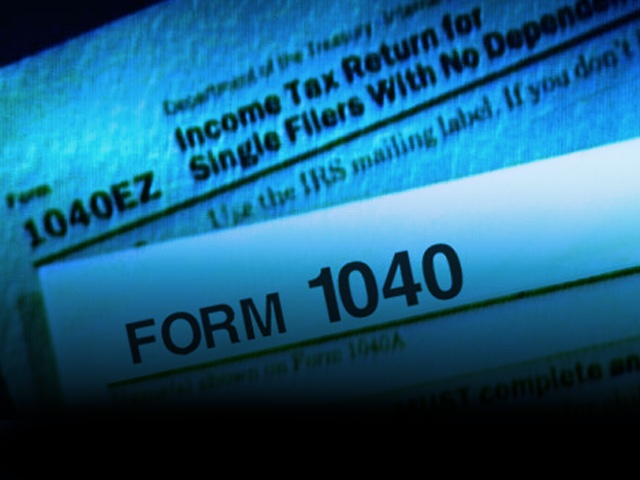Personal Exemptions, Standard Deductions and Tax Brackets
In 2011, personal exemptions and standard deductions will rise and tax brackets will widen due to inflation.
These inflation adjustments relate to eight tax provisions that were either modified or extended by the Tax Relief, Unemployment Insurance Re-authorization and Job Creation Act of 2010 that became law on Dec. 17. New dollar amounts affecting 2011 returns, filed by most taxpayers in early 2012, include the following:
- The value of each personal and dependent exemption, available to most taxpayers, is $3,700, up $50 from 2010.
- The new standard deduction is $11,600 for married couples filing a joint return, up $200, $5,800 for singles and married individuals filing separately, up $100, and $8,500 for heads of household, also up $100. The additional standard deduction for blind people and senior citizens is $1,150 for married individuals, up $50, and $1,450 for singles and heads of household, also up $50. Nearly two out of three taxpayers take the standard deduction, rather than itemizing deductions, such as mortgage interest, charitable contributions and state and local taxes.
- Tax-bracket thresholds increase for each filing status. For a married couple filing a joint return, for example, the taxable-income threshold separating the 15-percent bracket from the 25-percent bracket is $69,000, up from $68,000 in 2010.
- The maximum earned income tax credit (EITC) for low- and moderate- income workers and working families rises to $5,751, up from $5,666 in 2010. The maximum income limit for the EITC rises to $49,078, up from $48,362 in 2010.The credit varies by family size, filing status and other factors, with the maximum credit going to joint filers with three or more qualifying children.
- The modified adjusted gross income threshold at which the lifetime learning credit begins to phase out is $102,000 for joint filers, up from $100,000, and $51,000 for singles and heads of household, up from $50,000.
Several tax benefits are unchanged in 2011. For example, the monthly limit on the value of qualified transportation benefits (parking, transit passes, etc.) provided by an employer to its employees, remains at $230.
Can a LLC be Taxed as a S Corp?
 Yes, it can. An LLC can be taxed as an S Corp, assuming it qualifies for S Corp taxation status. An LLC can also be taxed as a C Corporation for that matter. This makes an LLC a very flexible business type.
Yes, it can. An LLC can be taxed as an S Corp, assuming it qualifies for S Corp taxation status. An LLC can also be taxed as a C Corporation for that matter. This makes an LLC a very flexible business type.
Option 1: LLC electing to be treated as a Corporation
A. Single Owner LLC:
If the LLC has only one owner, the IRS will automatically treat the LLC as if it were a sole proprietorship (a disregarded entity), unless an election is made for it to be treated as a corporation. An LLC may elect corporate tax treatment using IRS Form 8832 (Form 8832, Entity Classification Election).
B. LLC Owned by More than One Person:
If the LLC has two or more owners, the IRS will automatically treat the LLC as if it were a partnership unless an election is made for it to be treated as a corporation. An LLC may elect corporate tax treatment using IRS Form 8832 (Form 8832, Entity Classification Election).
Option 2: LLC electing to be treated as an S Corp
An LLC may elect S Corp tax treatment by filing IRS Form 2553 (Form 2553 Election by a Small Business Corporation). However, sometimes the LLC must file both Form 8832 (see Option 1 above) and Form 2553.
To determine whether your LLC can file Form 2553 alone, or whether Form 8832 must also be filed, see page 1 of the Instructions to form 2553 or talk with an LLC attorney in your state.
Tips for an LLC Taxed as an S Corp:
Electing to have your LLC taxed as an S Corporation involves a couple procedural changes in paying and filing your taxes.
1. Quarterly Filings for an LLC Taxed as an S Corp
Keep in mind that if your business is treated as an S Corp, it must pay estimated taxes. But this inconvenience is often offset by the tax benefit of an S Corp (self-employment tax savings).
2. Income Taxes at the End of the Year
Also, an S Corp must file different income tax forms at the end of the year.
Shareholder-employees will receive two tax documents from the S-Corporation at the end of the year: a W-2 wage statement (income as an employee) and a Schedule K-1 statement.
3. No Self-Employment Tax for an S Corp Owner-Employee
Shareholder-employees of an S-Corp (including an LLC taxed as an S Corp) do not pay Self-Employment Tax because their wages are reported on a W-2, with Social Security and Medicare taxes already withheld. By contrast, the owner of an LLC that is taxed as a partnership or sole proprietorship (not an S Corp) does pay Self-Employment Tax. Self-Employment Tax is figured at the end of the year on Schedule SE via Form 1040.
Should You File a Tax Return?
 Do you ever wonder whether your income is high enough to warrant the filing of a tax return? Because the minimum income level varies depending on filing status, age, and the type of income you receive, it can be a bit complicated.
Do you ever wonder whether your income is high enough to warrant the filing of a tax return? Because the minimum income level varies depending on filing status, age, and the type of income you receive, it can be a bit complicated.
Use the following guide to determine whether you must file a federal income tax return for 2010.
Single Taxpayers
If you expect to file a single return, the IRS requires you to file a return for 2010 if your gross income for the year is at least $9,350 if you are under age 65 and $10,750 if you are 65 or older.
Married Filing Jointly
For married persons filing jointly, you are required to file a return if gross income for 2010 is at least $18,700 if both of you are under age 65. If one of you was at least age 65 in 2010, the limit is $19,850 – and if both of you were 65 or over, you must file if you made at least $20,900.
If you are not living with your spouse at the end of the year or you weren’t living with them on the day they passed away, the IRS requires you to file a return if your gross income is at least $3,650. Each personal exemption in 2010 is worth $3,650.
For married persons filing a separate return, no matter what age, you must file a return if gross income is at least $3,650.
Head of Household
For persons filing as head of household, you must file a return for 2010 if gross income is at least $12,000 if under age 65 and $13,400 if at least age 65.
Qualifying Widow or Widower
For persons filing as a qualifying widow or widower with a dependent child, you must file a return for 2010 if gross income is at least $15,050 if under age 65 and $16,150 if at least age 65.
Other Situations That Require Filing
Even if you don’t earn this much income, other situations necessitate filing a tax return. For example, a dependent has to file a return for 2010 if they received more than $950 in unearned income or more than $5,700 in earned income.
Other situations include:
You Owe Certain Taxes. If you owe FICA or Medicare taxes (also called payroll taxes) on unreported tips or other reported income that were not collected, you must file a return. You must also file a tax return if you are liable for any alternative minimum tax. Finally, you must file a return if you owe taxes on individual retirement accounts, Archer MSA accounts, or an employer-sponsored retirement plan.
Advance Earned Income Tax Credit Payments. The Earned Income Tax Credit is a federal income tax credit for eligible low-income workers. The credit reduces the amount of tax an individual owes, which may be returned in the form of a refund. If you receive advance payments for the earned income credit from your employer, you must file a return.
Self-Employment Earnings. If your net earnings from self-employment are $400 or more, you must file a return.
Church Income. If you earn employee income of at least $108.28 from either a church or a qualified church-controlled organization that is exempt from employer-paid FICA and Medicare taxes, you must file a return.
Questions?
Contact me for more information about filing requirements and your eligibility to receive any tax credits.
Filing Status – What You Need to Know
 Your federal tax filing status is based on your marital and family situation. It is an important factor in determining your standard deduction and your correct amount of tax, and whether you must file a return.
Your federal tax filing status is based on your marital and family situation. It is an important factor in determining your standard deduction and your correct amount of tax, and whether you must file a return.
Your marital status on the last day of the year determines your status for the entire year. If more than one filing status applies to you, you may choose the one that gives you the lowest tax obligation.
There are five filing status options:
- Single. Generally, if you are unmarried, divorced, or legally separated according to your state law, and you do not qualify for another filing status, your filing status is Single.
- Married Filing Jointly. If you are married, you and your spouse may file a joint return. If your spouse died during the year and you did not remarry, you may still file a joint return with that spouse for the year of death. This is the last year for which you may file a joint return with that spouse.
- Married Filing Separately. Married taxpayers may elect to file separate returns.
- Head of Household. Generally, you must be unmarried and paid more than half the cost of maintaining a home for you and a qualifying person for more than half a year.
- Qualifying Widow(er) with Dependent Child. You may be able to file as a qualifying widow or widower for the two years following the year your spouse died. To do this, you must meet all four of the following tests:
- You were entitled to file a joint return with your spouse for the year he or she died. It does not matter whether you actually filed a joint return.
- You did not remarry in the two years following the year your spouse died.
- You have a child, stepchild, or adopted child (a foster child does not meet this requirement) for whom you can claim a dependency exemption.
- You paid more than half the cost of maintaining a household that was the main home for you and that child, for the whole year.
After the two years following the year in which your spouse died, you may qualify for head of household status.
I can definitely help you determine which filing status is best for your situation. Just send an email.
Check Your Withholdings
With less than two months remaining in the calendar year, it’s a great time to double check your federal withholding to make sure enough taxes are being taken out of your pay.
The average refund for 2009 was $2,887, up 8 percent from 2008. Even though the Making Work Pay Tax Credit lowered tax withholding rates in 2009 and 2010 for millions of American households, some workers and retirees still need to take steps to be sure enough tax is being taken out of their checks.
Certain folks should pay particular attention to their withholding. These include:
- Married couples with two incomes
- Individuals with multiple jobs
- Dependents
- Some Social Security recipients who work
- Workers who do not have valid Social Security numbers
- Retirees who receive pension payments
As was the case in 2009, taxpayers who wind up owing tax because too little was taken out of their paychecks during 2010 may qualify for special relief on a penalty that sometimes applies. Depending on their personal situation, some people could have less withheld from their paychecks than they need or want.
Failure to adjust withholding could result in potentially smaller refunds or, in limited instances, a taxpayer may owe tax rather than receive a refund next year.
An easy way to check how much you’ll owe this year is to use the 1040 Tax Calculator on our website. Or just give us a call and we’ll figure it out with you.











